Cheap Airfares and Sandy Beaches Found Elsewhere
The mid-1960s heralded an era in which Japanese tourists started to travel abroad in significant numbers for the first time. Prior to 1964, the Japanese government made it difficult for the average Japanese to acquire a passport to travel overseas, ostensibly for jingoistic reasons as they wanted workers’ hard-earned yen spent at home. As comparatively close destinations such as those in Asia and the Pacific were off limits during the earlier part of the decade, the tourism industry looked nearer to home to find an equivalent haven. Thankfully, they didn’t need to look too far, with the Izu Islands sporting the subtropical volcanic island of Hachijo-jima, 287 kilometres (178 miles) south of Tokyo. Short travel times by ferry and a readymade airport, courtesy of the Imperial Japanese Navy, meant the island could quickly scale up and handle large numbers of inbound tourists.
Government attempts to promote the island as the “Hawaii of Japan” resonated positively, and soon the island saw a rapid influx of investment and property development. The largest of these was the lavish Hachijo Royal Hotel, modelled on French Baroque architecture. Along with plaster renditions of Greek statues and ornate water fountains, it stood proudly as a showcase of the economic boom taking place on the mainland. At the time of its opening in 1963 (some sources assert 1968), it was one of the largest hotels in Japan and attracted its clientele from the ever-expanding Japanese middle class. The hotel complex was even bold enough to honour its president, Eiji Yasuda, with his own statue alongside his prized horse.
Hachijo Royal Hotel Timeline
.
Fast forward 30 years and cracks had plainly emerged. With overseas travel having become the norm rather than the exception, the idea of hanging out on black volcanic sands no longer held the same appeal. With world class beaches only a little further afield in places such as Guam, Hawaii, and Thailand, Hachijo-jima was going to struggle to reinvent itself. The hotel subsequently underwent several name changes, settling on the Hachijo Oriental Resort prior to its demise and eventual closure in 2006.
Having visited the hotel site recently, it revealed a very sorry state of affairs. Even though it’s been only 10 years since ceasing operations, the tropical heat and saltwater have ensured a swift deterioration of the hotel’s amenities. In comparison to photos taken only a few years ago, the grounds are now so overgrown that they resemble a jungle. With the likelihood of finding a new owner quickly fading, it’s a wretched sight to see this once grand hotel crumble around itself.
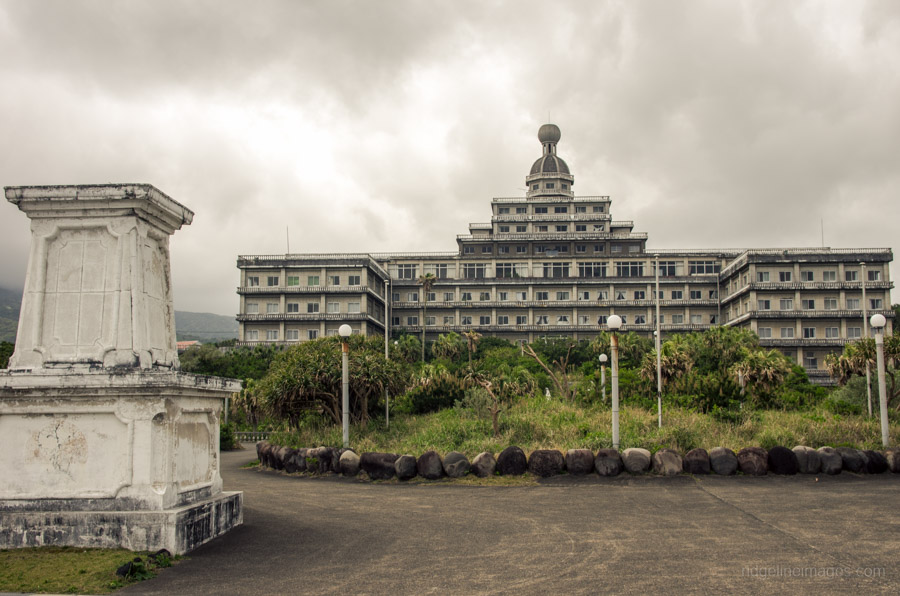
Main entrance with roundabout out front.
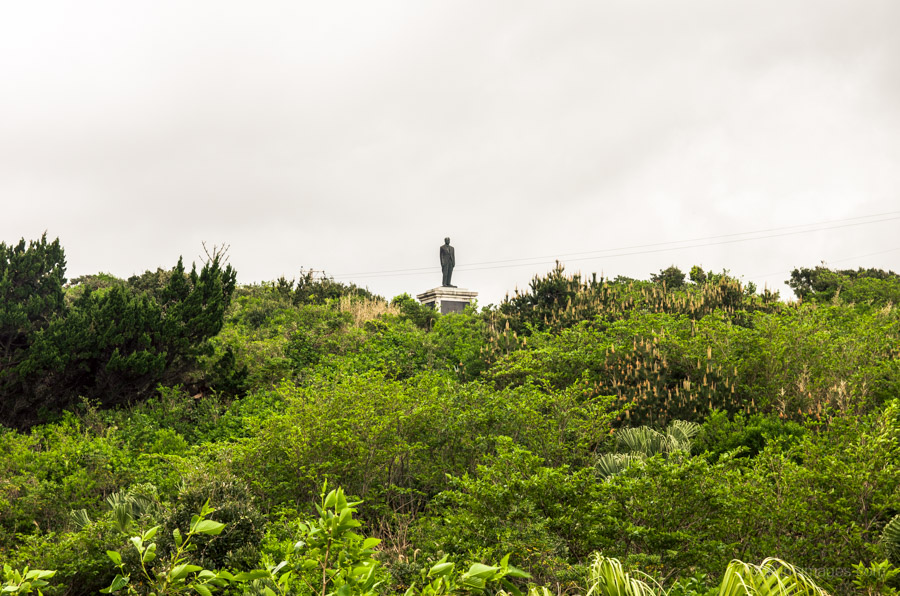
Hotel founder Eiji Yasuda paints a lonely figure.
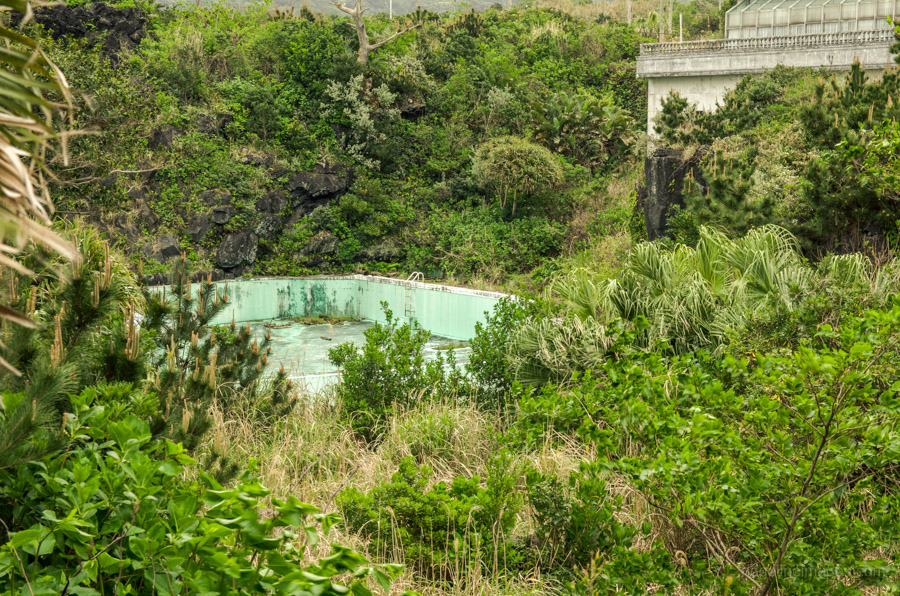
Empty swimming pool in rear garden area.
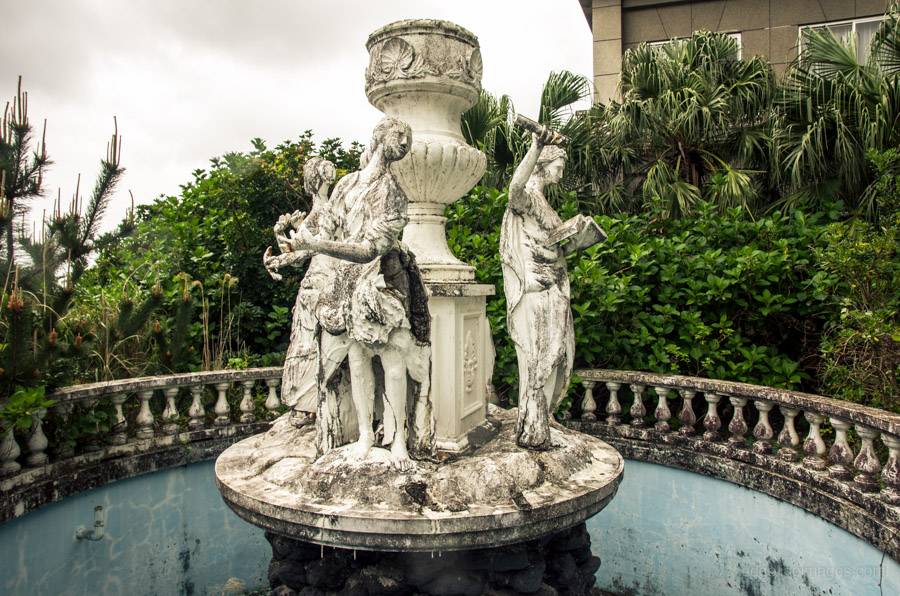
Ornate fountain looking worse for wear.
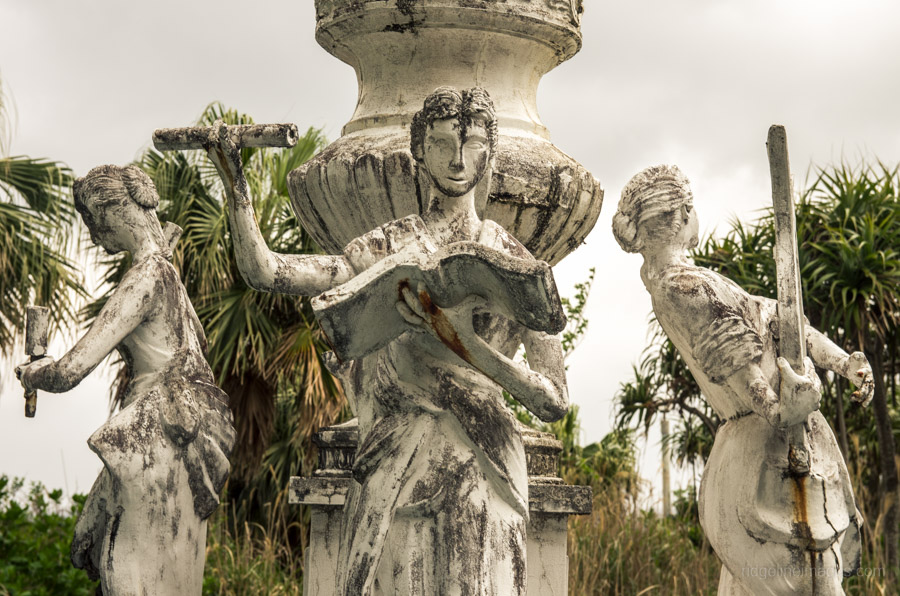
Plaster statues well past their prime.
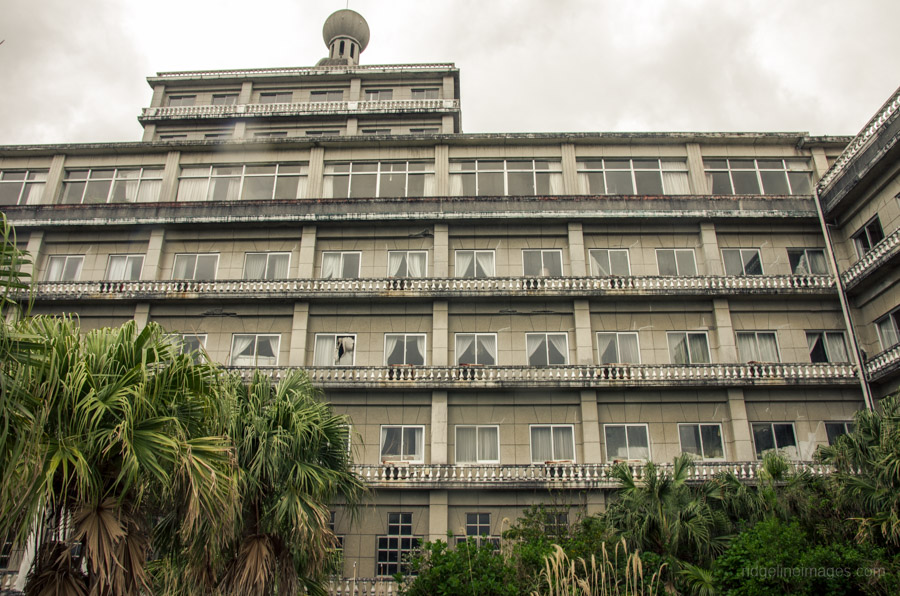
Tattered curtains a plenty.
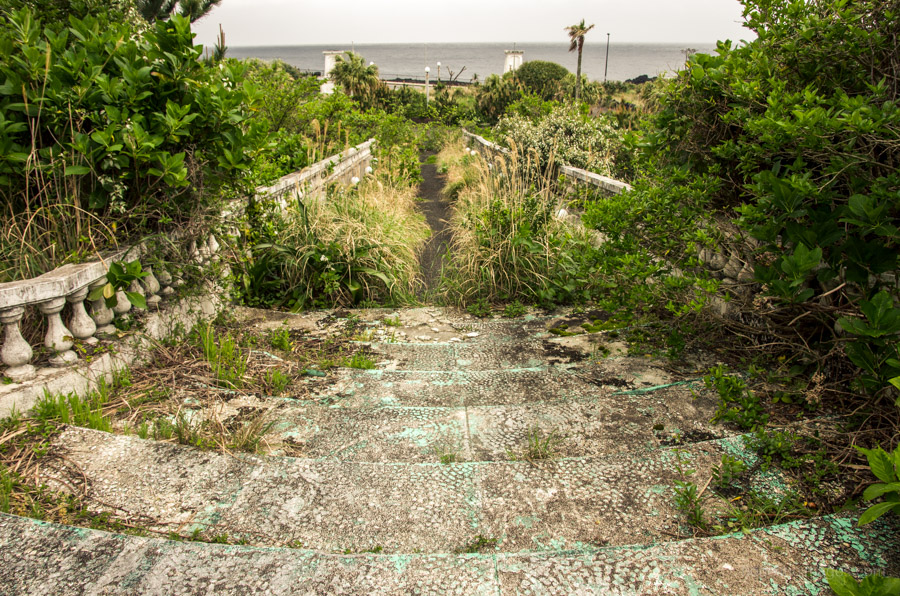
Steps leading to the outside entrance.
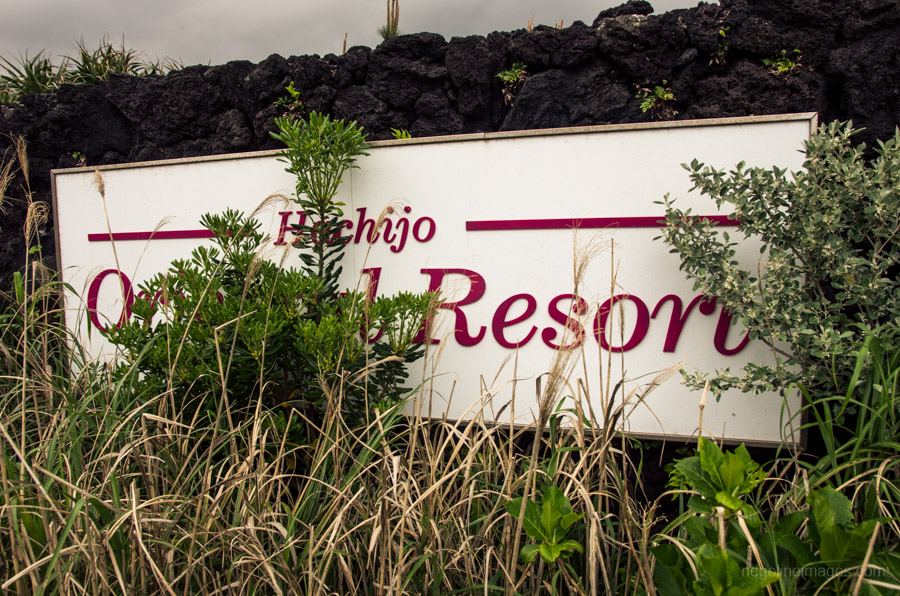
Hachijo Oriental Resort sign struggling to be seen.
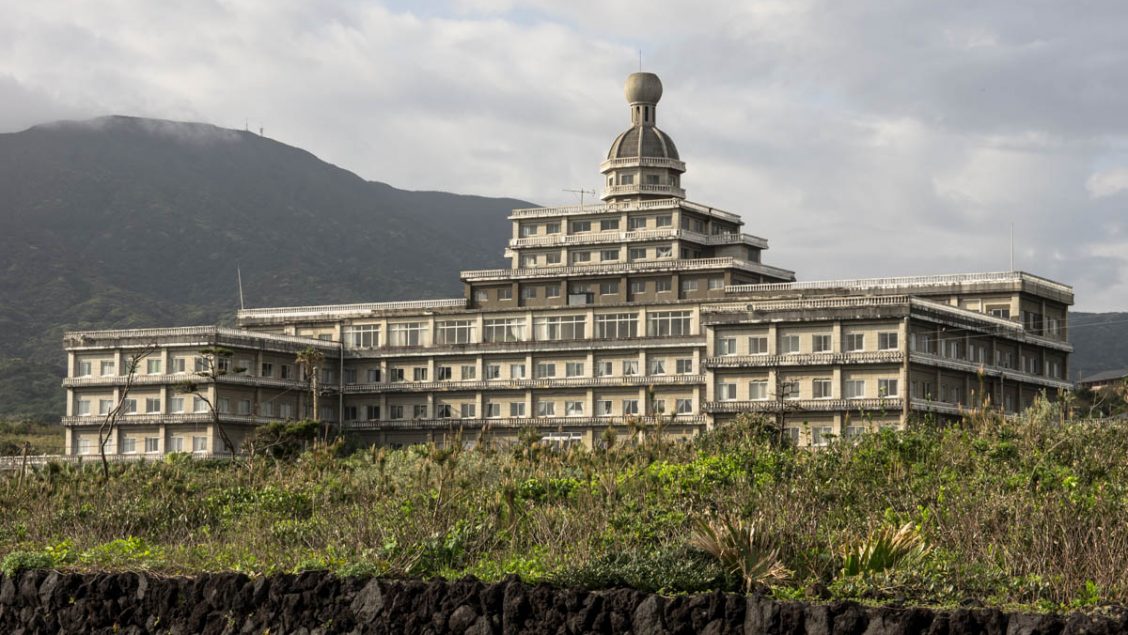

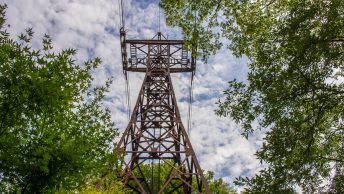

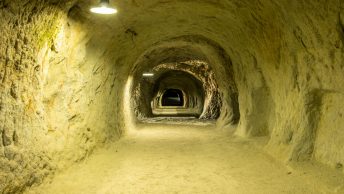
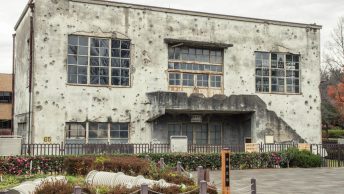

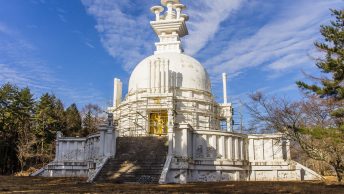
The demise of the Hachijo Oriental Resort is such a sad waste. Perhaps an enterprising group could crowd source and fund its revival. There surely must be some very worthwhile uses for this building. A great story David.
My thoughts exactly Brenda. It would seem an appalling waste if all the resources that went into building this stately hotel were to fall by the wayside. With Japan in the grip of a demographic crisis reviving the building as a hotel seems unlikely, but surely some alternative use could be thought up you would imagine.
Okinawa has abandoned hotels like this all over the island. Tourism is still big business here so new hotels are still being built.
That’s interesting to hear. Unfortunately for Hachijo-jima given its isolation and seasonal tourism means the likelihood of any large infrastructure investment is near zero.
Still got some pictures from the hotel from better days. I actually spend my holidays there in March, 2006. Back then it already looked quite run down though.
Mathias, it sounds like you were one of the last paying customers to stay there! Nice to have some confirmation that the hotel was open still in early 2006.
Hello Mathias I am interested in you showing me the photos you took of the hotel as I am fascinated by it.
Hi, I am interested In seeing your pictures. Is it possible to see them?
Do you have the pictures of the hotel that you can share? I would love to see the before pics.
Your photos are poignant, as is the story. It seems that, long before this hotel was built, Hachijojima had something of a reputation as a sanatorium island, making it a kind of Davos (“Magic Mountain”) of the Izu Islands (hence the link from my latest post on One Hundred Mountains). But now that TB is treated with antibiotics, it’s unlikely that the island could reclaim that role…
Thank you for that and the historical context isn’t too much of a surprise. No doubt Hachijojima’s comparative isolation made it a perfect spot for a tuberculosis sanatorium. Apparently after industrialisation reached Japan it was followed by a TB epidemic in the late 19th century necessitating the construction of numerous sanatoriums. None more tragic then the Nagashima Sanatorium for leprosy patients which continued to operate shamefully decades even after the diseased had been officially cured.
I so enjoyed all the comments, and photo’s. Documentaries done on the Hachijo Oriental Resort, are most interesting… It reminds me of a story told about a Ghost Ship, this would be a great movie, with a script written by someone with a great imagination ~~
I just found out about Hachijojima yesterday. I found your article in a search for info about it today. Another link that turned up was this one with some more history. Very intriguing place.
https://www.japantimes.co.jp/life/2005/06/17/travel/tokyo-as-a-chilled-out-paradise/#.XCwBBc17mM8
An older article but a good one so thanks for sharing. If you’re coming to Tokyo it’s definitely worth the effort to try and visit this beautiful island.
–Been searching for about 10 minutes, now, and have yet to see any pictures of this place when it was open. You’d think it would be more readily available, especially on Google.
Good point. I’ve just had another search online with the vast consensus being the hotel opened as the Hachijo Royal Hotel in 1963 (a few Japanese blogs contend it was 1968). As for pictures from that time period there don’t seem to be any. Surely photos were taken of the hotel in the 1960s it’s just that no one has bothered to share them online.
Hi! I just watched a Proper People video on the place and was wondering if when you were there you found that one side of the place was all but destroyed by water, etc and the other side relatively untouched. I thought I’d try to find out if a typhoon hit the place on one side and did that damage. If it wasn’t that bad when you were there it would help trim down the timeframe. Thanks!
The photos taken from the back of the hotel look pretty much similar to the front. Given the island is prone to typhoons they have no doubt caused damage, but I would say more generally than in any particular location. Based on their video, the outside of the hotel at least doesn’t look to be much different to when I visited four years back.
How does one buy the place? who do we go to?
Good questions Jerry! If someone wished to purchase the hotel, I think it would be relatively easy. First, you’d need to pay a visit or contact the Hachijo Town Hall, obtain the contact details of the current owner/proprietor (mochinushi) and begin negotiations. The biggest impediment and probably the reason why no one has bothered thus far is it wouldn’t make economic sense. As mentioned in the article holidaymakers have far more choice these days and the island no longer holds the same appeal. The hotel was once a popular honeymoon destination when travelling abroad was still uncommon for Japanese but starting in the late 1960s there was a noticeable shift from domestic to overseas travel. In addition, the Hachijo Royal Hotel has accumulated substantial debts which is also a reason why it can’t be demolished. The are apparently three other vacant but smaller hotels on the island that face a similar a predicament.
LOL…it would cost $1 Billion USD to fix this place. So why would anyone want to buy it?
Besides, tourists have far better destinations to choose from now. And that’s why it failed, not enough people wanted to go there anymore. That may sound insensitive but it’s the reality of economics.
I think that it would be a great investment to remodel this hotel and bring it back to its glory with even more wonderful features. It would be a shame to see this building crumble when it has the potential to be a first class resort.
How much is it? is it worth it?
Just as an interesting addition to the comments already here, I contacted a Japanese architectural firm for an estimate on how much they would expect a renovation to cost of this resort. And although we don’t have specific floor area sizing, and only estimates off of google maps as far as measurements, they estimate that you could expect to pay between 2mill to 3 mill JPY per tsudo (3.3 sq meters). By my calculations that would put a renovation cost of US$60 to 100 million just for the main building, let alone the grounds and other secondary buildings.
Thanks for that. And another reason why a full restoration will almost certainly never come to fruition which is a bit sad.
Great article thanks.
I’m interested too in photos from it in it’s hay day surfacing.
I’ve found an yukata with ‘Royal Hotel’ as part of the screen print and wonder if it’s silly to think that was standard issue. Does anyone know what year the name changed? It is a similar cotton and ‘make’ to one my mother has from when she lived in Tokyo in the 70s
From my understanding the hotel had two name changes. Hachijo Royal Hotel (1963-1996), Priscilla Resort Hachijo (1996-2003) and Hachijo Oriental Resort (2004-2006).
Thanks for that. So it may be newer than I thought… still an interesting relic.
Cheers
So sad to see the downfall of this hotel. I would have LOVED to go there for a holiday , but now the building sits there collecting dust. I hope someday it can be revived. But on another note those pictures are breath taking.
This place is creepy, ive seen people explore this place and its definetly haunted, and if you say its not or somthin like that, i bet ypu havent been inside. So when your inside the hotel, then you can tell me its not
Can you please give a google link on this location
It’s here: https://maps.app.goo.gl/WfdhaqPHwTxbFkfZ8
Good day, David
I hope all is well
My work as an Interior Architect, Interior Design, Architecture Conceptualist, Researcher, and Architecture academic, working in United States and Europe.
I’m seeking as much information on the beautiful Hachijo Royal Hotel (articles and images) to use in the development of Heritage Architecture and Adaptive Reuse academic curriculum and student journal. I welcome the opportunity to use your images and article in forming the curriculum and teaching journal.
It would be greatly appreciated if you would grand me the use of the images and articles for that purpose. I look forward to hearing from you soon.
All the best,
~MLL
Hi MLL,
I’m glad to hear of your interest in the Hachijo Royal Hotel.
I’m happy for you to use my images and article for your academic curriculum and journal, provided that the source is clearly cited and acknowledged.
Wishing you all the best with this project.
Thanks,
David